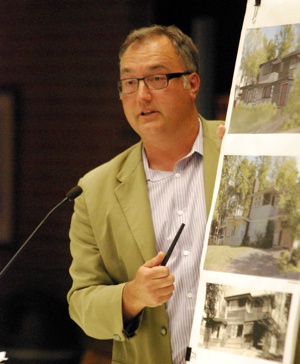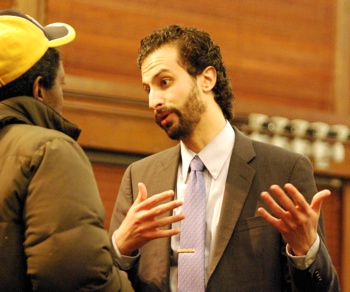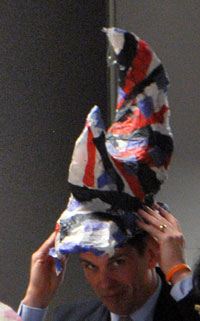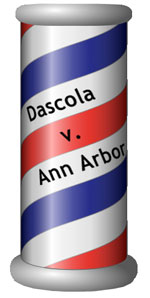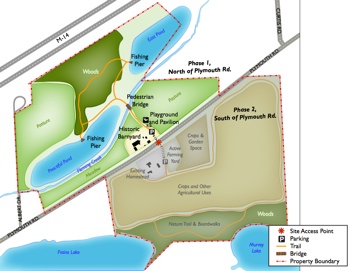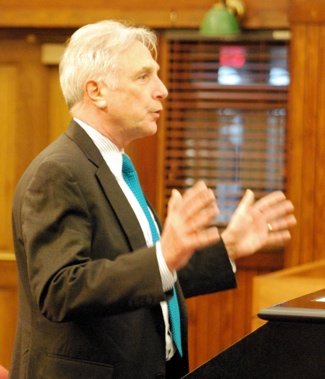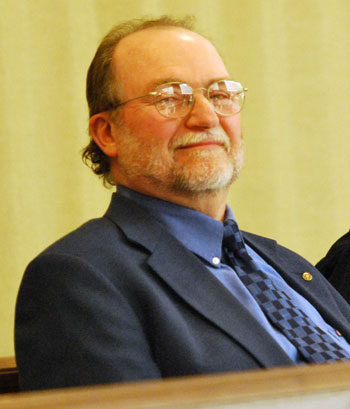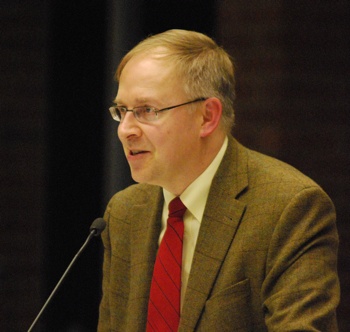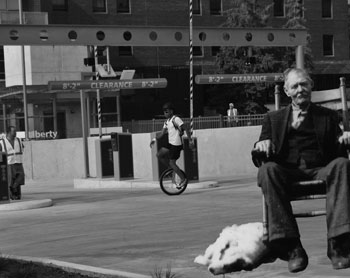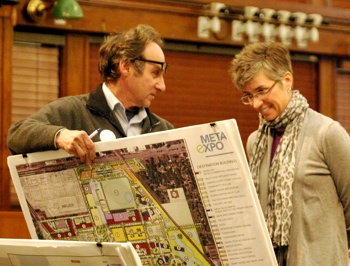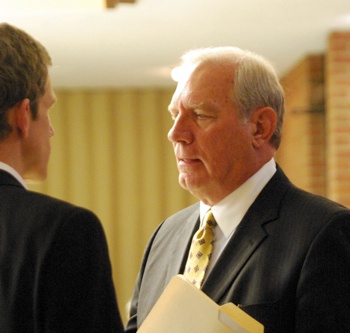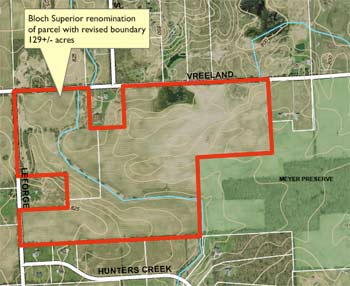Ann Arbor park advisory commission meeting (March 18, 2014): The main discussion at PAC’s March meeting focused on implications from city council action the previous day regarding the Library Lane site – the surface of an underground parking garage.

From left: Tina Rosselle, Becky Gajewski, Erika Pratt. All three are city staff who are involved in volunteer and outreach efforts for the parks & recreation unit. (Photos by the writer.)
But the council followed up at its April 7 meeting by considering a total of four resolutions on the Library Lane site – including the reconsideration of the two March 17 resolutions. At the end of the April 7 meeting, a portion of the site was still reserved for an urban park, and the city administrator was still directed to hire a broker to list the property for sale. A vote on how to use the proceeds of a possible sale was put off until June. For more details on the council’s April 7 actions, see Chronicle coverage: “Council Wrangles on Library Lot – Proceeds, Process.”
On March 17, the city council had passed two resolutions regarding the site: (1) reserving a portion of the west side, along South Fifth Avenue, as the site for an urban public park; and (2) directing the city administrator to hire a broker to explore the sale of development rights on that site. The council’s meeting, which adjourned at about 1 a.m., included debate that lasted more than 2.5 hours on the future of this city-owned property, located north of the downtown library.
The following day, at PAC’s March 18 meeting, commissioners were briefed by the two councilmembers who also serve on PAC as ex officio members: Mike Anglin (Ward 5) and Christopher Taylor (Ward 3).
Anglin, who had co-sponsored the park resolution along with Jack Eaton (Ward 4), told commissioners that he’d been comfortable with both resolutions, and that he had voted for both of them.
Anglin said he hoped PAC would now start working on guidelines for developing a portion of the site, and to make sure all stakeholders are well-represented. “Feelings were hurt last night,” he said, “and so now we’re in damage control, and we’re also in the idea of further discourse. And we need to do that.” There needs to be a real dialogue, including the library, the Ann Arbor Downtown Development Authority, PAC and others in the community, he said – all stakeholders need to help decide what to do as a town.
For his part, Taylor pointed out that the council’s urban park resolution doesn’t actually ask PAC to do anything. The “resolved” clauses make no mention of PAC. He said he didn’t know the rationale for that – whether it was an attempt to go around PAC, or whether there’s an expectation that PAC will be brought in. “There’s a measure of uncertainty there,” Taylor said, so PAC’s role is unclear.
Taylor also noted that there’s complete consensus on the idea that there will be public space on the Library Lane parcel, to which the public has full access. “There is not complete consensus on who owns that element of the parcel,” he added. “Nor, I think, is there complete consensus on who will maintain and provide security for that part of the parcel.”
Ingrid Ault, PAC’s chair, noted that the commission had developed recommendations for downtown parks, adding that it was “very disappointing to feel that we weren’t listened to” as the council resolution was developed. If that had happened, she added, “we wouldn’t have hurt feelings.”
Though Anglin had supported the council’s March 17 actions, subsequently – at the council’s April 7 meeting – he co-sponsored another resolution that would have delayed hiring a broker until additional public process had been undertaken, including the possibility of reserving the entire site for a park. After a 40-minute debate and a recess to discuss a possible compromise, the council unanimously voted down that resolution – though it could be brought back for future consideration.
Anglin also supported another action on April 7, which passed, that increased the amount reserved for a park to 12,000 square feet, along the entire west side of the South Fifth Avenue parcel. Previously, the council had indicated a range for the space – between 6,500 and 12,000 square feet, with a northern boundary to be determined. A range, instead of 12,000 square feet, had been the result of an amendment made at the council table on March 17. During deliberations on April 7, Anglin said he hoped for an even larger park at the site.
PAC’s March 18 meeting agenda also included a resolution to recommend that the city apply for a grant to help renovate the Gallup Park pathway, which is part of the countywide Border-to-Border Trail. The grant application is to the federal transportation alternatives program (TAP), which is administered in this region by the Southeast Michigan Council of Governments (SEMCOG) and statewide by the Michigan Dept. of Transportation (MDOT). At its April 7 meeting, the city council authorized the grant application.
Also on March 18, Dave Borneman, parks and recreation deputy manager, gave an overview of volunteer efforts within the parks, recreation facilities and natural areas, and talked about how people in the community can participate. Ault encouraged others to volunteer, saying she’s taken part in the frog and toad survey for the past couple of years. “I’ve gone to places that I didn’t really know existed,” she said. “And I can tell you what a spring peeper and a leopard frog sound like.” [Full Story]




